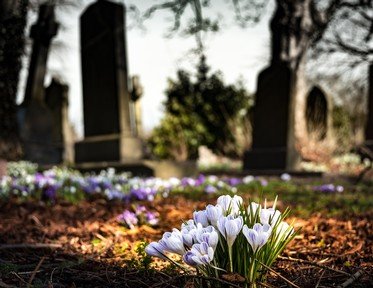Quiz Answer Key and Fun Facts
1. Who am I? I am a scientist who was born in 1643 and was laid to rest in Westminster Abbey, London, in 1727. (I do hope all the mourners at my funeral felt the gravity of the occasion...)
2. Who am I? I am a politician who was born in 1874. My grave is in St. Martin's Churchyard in Oxfordshire and my funeral was attended by 112 nations. (So perhaps this was my 'Finest Hour'?)
3. Who am I? I died in 2002 and my grave is inscribed with 'I told you I was ill.' (I can't help wondering if this other funny quote of mine was used at my funeral: "All men are cremated equal"?)
4. Who am I? I was born in 1795 and died at age 25 in Rome. I was one of Britain's most treasured poets. (I wonder if any Nightingales gave me an Ode at my funeral?)
5. Who am I? I am a Hollywood legend who was born in 1907 and died in 1979. I was buried in an unmarked grave for nearly 20 years. (I wonder if my family showed 'true grit' at my funeral?)
6. Who am I? I was born in 1919 and was buried for 20 years in a grave in Italy, before being returned to my home country in 1979. (Should my fellow Argentinians have cried for me?)
7. Who am I? I was born in 1947 and died in 2016. Only my wife and children know the exact whereabouts of my grave. (I wonder if they said, 'Ashes to Ashes', when they scattered my remains?)
8. Who am I? I was born in 1564 and died in 1616. My grave is rather unique, in that it is inscribed with a curse. (Were my contributions to the world 'much ado about nothing'? I thinketh not.)
9. Who am I? I died just one day before my famous mother in 2016, and my urn is a giant porcelain Prozac pill. (I wonder if there were any 'solo' mourners, at my funeral, or if they all came in groups?)
10. Who am I? I am a musician who was born in 1940. I was fatally shot in New York in 1980. (I can't imagine the grief my family and fans must have felt at hearing the news.)
11. Who am I? I was born in 1945 and died in 1981, when a malignant melanoma under my toenail spread to my brain, liver and lungs. (There were doubtless many wailers at my funeral).
12. Who am I? I was born in 1983 and was just 27 when I died in 2011 from alcohol poisoning. (I wonder if the mourners were singing 'no, no, no'?)
13. Who am I? I am a musician who was born in Washington in 1967, and I died in Seattle in 1994. (On the funeral invitation, I wonder if under 'dress code' it said: 'come as you are'?)
14. Who am I? I was born in 1939 and died in 1984, aged 44, after being shot.
(I wonder how my fans heard of my demise...maybe through the grapevine?)
15. Who am I? A remarkable woman, I was born in 1867 and I died in 1934 at the age of 66. (I can only think people were radiating sadness at my funeral).
Source: Author
heatherlois
This quiz was reviewed by FunTrivia editor
skunkee before going online.
Any errors found in FunTrivia content are routinely corrected through our feedback system.
